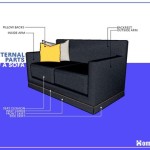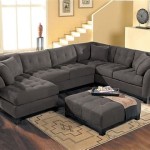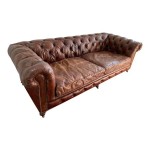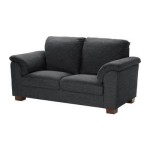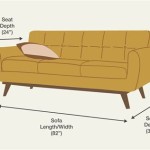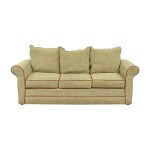Fixing a Sagging Sofa with Plywood: A Comprehensive Guide
A sagging sofa is a common household problem. Over time, the internal support structure of a sofa can weaken due to regular use, leading to uncomfortable seating and an aesthetically unappealing piece of furniture. This sagging often stems from issues with the springs, webbing, or the frame itself. While professional upholstery repair is a viable solution, it can be expensive. A more affordable and accessible approach involves reinforcing the sofa with plywood. This method provides added support, effectively addressing the sagging and extending the lifespan of the sofa.
The application of plywood to address a sagging sofa is a practical solution that requires careful planning and execution. It involves assessing the existing damage, selecting the appropriate plywood thickness, cutting the material to the required dimensions, and securely installing it within the sofa frame. The process, when performed correctly, can significantly improve the sofa's structural integrity and comfort level.
This article will provide a detailed guide on how to fix a sagging sofa using plywood, covering essential aspects such as preparation, plywood selection, cutting, installation, and potential challenges. By following these instructions, individuals can effectively restore their sagging sofa and enjoy a more comfortable and supportive seating experience.
Assessing the Sofa's Sag and Determining the Need for Plywood
Before embarking on any repair, a thorough assessment of the sofa's condition is imperative. This assessment will determine the extent of the sagging and identify the underlying causes. Begin by visually inspecting the sofa. Look for areas where the cushions sink excessively or where the fabric appears stretched or strained. Press down firmly on different sections of the sofa to gauge the level of support provided. A noticeable lack of resistance in certain areas indicates significant sagging.
Next, investigate the sofa's internal structure. This may involve removing the cushions and carefully examining the webbing, springs, and frame. Look for signs of damage such as broken springs, torn webbing, or cracked frame components. If the webbing is loose or the springs are weak, these issues should be addressed in conjunction with the plywood reinforcement. Sagging caused primarily by these factors may require additional or alternative repair methods.
While plywood reinforcement can be effective for sagging caused by weakened support structures, it is important to recognize its limitations. If the sofa's frame is severely damaged or if the sagging is due to extreme deterioration of the internal components, plywood may only provide a temporary or superficial solution. In such cases, professional repair or replacement of the sofa may be necessary.
Consider the age and overall condition of the sofa. If the sofa is old and has undergone significant wear and tear, it may be more cost-effective to invest in a new piece of furniture rather than attempting to repair it. However, if the sofa is relatively new or has sentimental value, plywood reinforcement can be a worthwhile option to extend its lifespan.
Finally, consider the type of sofa and its construction. Some sofas have more complex internal structures than others. Sofas with intricate spring systems or elaborate frames may require more specialized repair techniques beyond simple plywood reinforcement. In these cases, consulting with a professional upholsterer is recommended.
Selecting the Right Plywood and Preparing for Installation
Choosing the right type and thickness of plywood is crucial for a successful sofa repair. The plywood should be strong enough to provide adequate support but not so thick that it adds excessive weight to the sofa or interferes with its functionality. Common types of plywood suitable for sofa reinforcement include softwood plywood (such as pine or fir) and hardwood plywood (such as birch or maple). Hardwood plywood generally offers greater strength and durability, but it is also more expensive.
Plywood thickness typically ranges from ¼ inch to ¾ inch. For most sagging sofas, ½ inch or ¾ inch plywood is recommended. The specific thickness will depend on the severity of the sagging and the overall size of the sofa. For sofas with minor sagging, ½ inch plywood may suffice. However, for sofas with significant sagging or for larger sofas, ¾ inch plywood will provide greater support.
Before purchasing the plywood, measure the interior dimensions of the sofa frame where the plywood will be installed. These measurements will determine the size of the plywood sheets needed. It is advisable to take accurate measurements and add a small allowance (e.g., ¼ inch) to each dimension to ensure a snug fit. Consider creating a template using cardboard or paper to help visualize the placement of the plywood and ensure it fits properly within the frame.
In addition to plywood, other essential materials and tools are required for the installation process. These include a saw (circular saw, jigsaw, or hand saw) for cutting the plywood, a measuring tape, a pencil for marking the plywood, sandpaper for smoothing the edges, a drill with appropriate drill bits, screws or staples for securing the plywood to the frame, and safety glasses and gloves for personal protection.
Prepare the sofa for the installation process by removing the cushions and any loose components. Clean the interior frame of the sofa to remove any dust, debris, or loose particles. This will ensure a proper bond between the plywood and the frame. Inspect the frame for any existing damage and address any necessary repairs before installing the plywood. If the frame is cracked or broken, reinforcing it with wood glue and screws may be necessary.
Cutting and Installing the Plywood for Optimal Support
Once the plywood has been selected and the sofa has been prepared, the next step is to cut the plywood to the required dimensions. Use the measurements obtained earlier to mark the plywood with a pencil. Ensure accurate and precise markings to avoid any discrepancies during the cutting process. Use a straight edge or a ruler to guide the saw and ensure straight cuts. When using a power saw, wear safety glasses and gloves to protect yourself from flying debris.
After cutting the plywood, sand the edges to remove any splinters or rough surfaces. This will prevent the plywood from snagging on the sofa's fabric and ensure a smooth and comfortable surface. Test-fit the plywood pieces within the sofa frame to ensure they fit properly. Make any necessary adjustments to the size or shape of the plywood to achieve a snug and secure fit.
The installation process involves securing the plywood to the sofa frame using screws or staples. Pre-drilling pilot holes through the plywood and into the frame is recommended to prevent the wood from splitting. Use screws or staples that are long enough to penetrate the frame securely but not so long that they protrude through the fabric. Space the screws or staples evenly along the edges of the plywood, typically every 6 to 8 inches, to provide uniform support.
Consider the placement of the plywood within the sofa frame. In most cases, the plywood is installed horizontally across the frame to provide support for the cushions. However, depending on the specific design of the sofa and the location of the sagging, it may be necessary to install additional plywood pieces vertically or diagonally to provide targeted support to specific areas. Ensure that the plywood is positioned in a way that does not interfere with the sofa's springs, webbing, or other internal components.
Once the plywood is securely installed, test the sofa to ensure that the sagging has been adequately addressed. Sit on the sofa and apply pressure to different areas to gauge the level of support provided. If necessary, add additional plywood pieces or adjust the placement of the existing plywood to achieve optimal support. Pay attention to any areas where the sagging persists and provide additional reinforcement as needed.
After installation, reassemble the sofa by replacing the cushions and any other components that were removed. Inspect the sofa carefully to ensure that the plywood is not visible and does not interfere with the sofa's functionality. The goal is to provide hidden support that enhances the sofa's comfort and appearance without being noticeable.

How To Fix A Sagging Couch With Plywood Or Particleboard Dengarden

4 Ways To Fix Sagging Sofa Cushions Wikihow

3 Ways To Fix A Sagging Couch Or Sofa Simple And Easy Diy Springs Foam Supports
/cloudfront-us-east-1.images.arcpublishing.com/gray/PCI77YENJ5EH5JRDE5JIFIKK7Q.jpg?strip=all)
Furniture Fix Does It Work

How To Fix A Sagging Couch With Plywood Or Particleboard Cushions Repair

4 Ways To Fix Sagging Sofa Cushions Wikihow

How To Fix A Sagging Couch With Plywood Or Particleboard Dengarden

How To Fix A Sagging Couch 14 Steps

How To Fix A Sagging Couch With Plywood Theplywood Com

Couch Support If Your Cushions Sink In All You Need Is Slats From It S As We Have A New Diy

